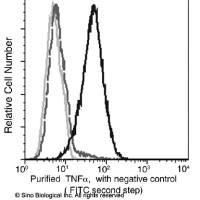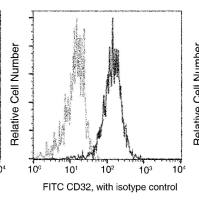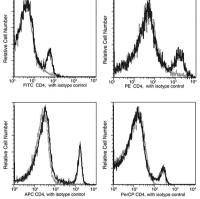Mouse Models of Bariatric Surgery
互联网
- Abstract
- Table of Contents
- Materials
- Figures
- Literature Cited
Abstract
Morbid obesity is linked to increased incidence of glucose intolerance, Type 2 diabetes mellitus, cardiovascular diseases, various forms of liver disease, and specific forms of cancer. Treatment of obesity by lifestyle modifications (i.e., changes in diet and exercise) and drug therapy is generally ineffective. Bariatric surgery is currently the most effective means of treating obesity and related disorders. We as well as others have developed surgical procedures for application to genetic mouse models that mimic an array of human bariatric surgical procedures used in the treatment of obesity. The application of bariatric surgery to genetic mouse models will broaden our understanding of the role of the gut in metabolic disease. Models that have been developed include gastric banding, sleeve gastrectomy (SG), Roux?en?Y gastric bypass (RYGB) with a complete exclusion of the stomach, duodenal?jejunal bypass (DJB), and biliopancreatic diversion (BPD). The detailed methods of these procedures are provided. Curr. Protoc. Mouse Biol. 2:295?306 © 2012 by John Wiley & Sons, Inc.
Keywords: bariatric surgery; gastric banding; sleeve gastrectomy; Roux?en?Y gastric bypass; duodenal?jejunal bypass; biliopancreatic diversion; mice
Table of Contents
- Introduction
- Basic Protocol 1: General Procedures and Care
- Basic Protocol 2: Gastric Banding
- Basic Protocol 3: Sleeve Gastrectomy (SG)
- Basic Protocol 4: Roux‐en‐Y Gastric Bypass (RYGB)
- Basic Protocol 5: Duodenal‐Jejunal Bypass (DJB)
- Alternate Protocol 1: Biliopancreatic Diversion
- Commentary
- Literature Cited
- Figures
Materials
Basic Protocol 1: General Procedures and Care
Materials
Basic Protocol 2: Gastric Banding
Materials
|
Figures
-
Figure 1. Gastric banding. (A ) Illustration of gastric banding. (B ) Photo of gastric banding. View Image -
Figure 2. Sleeve gastrectomy. (A ) Illustration of sleeve gastrectomy. The stomach is exposed and approximately 80% of the stomach is removed (the fore‐stomach and 70% of the granular stomach). (B ) Photo of sleeve gastrectomy. View Image -
Figure 3. Roux‐en‐Y gastric bypass (RYGB). (A ) Illustration of RYGB with complete exclusion of the stomach. The mouse RYGB involves the anastomosis between the esophagus and the jejunum, which is different from the RYGB procedure performed in humans that creates a stomach pouch out of a small portion of the stomach and attaching it directly to the small intestine. The mouse RYGB bypasses the whole stomach and duodenum. E‐J, esophago‐jejunal anastomosis; JJ, jejuno‐jejunal anastomosis. (B ) Illustration of RYGB. View Image -
Figure 4. Duodenal‐jejunal bypass (DJB). (A ) Illustration of DJB. DJB consists of a stomach‐preserving bypass of the duodenum and a short segment of the proximal jejunum. The distal jejunum is anastomosed to the proximal duodenum. D‐J, duodenal‐jejunal anastomosis; J‐J, jejuno‐jejunal anastomosis. (B ) Photo of DJB. View Image
Videos
Literature Cited
| Literature Cited | |
| Baetens, D., Stefan, Y., Ravazzola, M., Malaisse‐Lagae, F., Coleman, D.L., and Orci, L. 1978. Alteration of islet cell populations in spontaneously diabetic mice. Diabetes 27:1‐7. | |
| Buchwald, H., Avidor, Y., Braunwald, E., Jensen, M.D., Pories, W., Fahrbach, K., and Schoelles, K. 2004. Bariatric surgery: A systematic review and meta‐analysis. JAMA 292:1724‐1737. | |
| Buchwald, H. and Scopinaro, N. 2009. Editorial: Changing of the guard but not of tradition at Obesity Surgery. Obes. Surg. 19:1‐2. | |
| Cunneen, S.A. 2008. Review of meta‐analytic comparisons of bariatric surgery with a focus on laparoscopic adjustable gastric banding. Surg. Obes. Relat. Dis. 4:S47‐S55. | |
| Donovan, J. and Brown, P. 2006. Parenteral injections. Curr. Protoc. Immunol. 73:1.6.1‐1.6.10. | |
| Gan, S.S., Talbot, M.L., and Jorgensen, J.O. 2007. Efficacy of surgery in the management of obesity‐related type 2 diabetes mellitus. ANZ J. Surg. 77:958‐962. | |
| Goldfine, A.B., Shoelson, S.E., and Aguirre, V. 2009. Expansion and contraction: Treating diabetes with bariatric surgery. Nat. Med. 15:616‐617. | |
| Goren, H.J., Kulkarni, R.N., and Kahn, C.R. 2004. Glucose homeostasis and tissue transcript content of insulin signaling intermediates in four inbred strains of mice: C57BL/6, C57BLKS/6, DBA/2, and 129X1. Endocrinology 145:3307‐3323. | |
| Guedes, D.Z., Primi, R., and Kopelman, B.I. 2011. BINS validation: Bayley neurodevelopmental screener in Brazilian preterm children under risk conditions. Infant Behav. Dev. 34:126‐135. | |
| Harrison, L.C. and Itin, A. 1979. A possible mechanism for insulin resistance and hyperglycaemia in NZO mice. Nature 279:334‐336. | |
| Kadera, B.E., Lum, K., Grant, J., Pryor, A.D., Portenier, D.D., and DeMaria, E.J. 2009. Remission of type 2 diabetes after Roux‐en‐Y gastric bypass is associated with greater weight loss. Surg. Obes. Relat. Dis. 5:305‐309. | |
| Keating, C.L., Dixon, J.B., Moodie, M.L., Peeters, A., Bulfone, L., Maglianno, D.J., and O'Brien, P.E. 2009. Cost‐effectiveness of surgically induced weight loss for the management of type 2 diabetes: Modeled lifetime analysis. Diabetes Care 32:567‐574. | |
| Kindel, T.L., Martins, P.J., Yoder, S.M., Jandacek, R.J., Seeley, R.J., D'Alessio, D.A., Obici, S., and Tso, P. 2011. Bypassing the duodenum does not improve insulin resistance associated with diet‐induced obesity in rodents. Obesity 19:380‐387. | |
| Kodama, H., Fujita, M., and Yamaguchi, I. 1994a. Development of hyperglycaemia and insulin resistance in conscious genetically diabetic (C57BL/KsJ‐db/db) mice. Diabetologia 37:739‐744. | |
| Kodama, H., Fujita, M., and Yamaguchi, I. 1994b. Differential hypoglycemic effect of 2,5‐anhydro‐D‐mannitol, a putative gluconeogenesis inhibitor, in genetically diabetic (db/db) and streptozotocin‐induced diabetic mice. Jpn. J. Pharmacol. 66:331‐336. | |
| Kodama, H., Fujita, M., Yamazaki, M., and Yamaguchi, I. 1994c. The possible role of age‐related increase in the plasma glucagon/insulin ratio in the enhanced hepatic gluconeogenesis and hyperglycemia in genetically diabetic (C57BL/KsJ‐db/db) mice. Jpn. J. Pharmacol. 66:281‐287. | |
| Kral, J.G. and Naslund, E. 2007. Surgical treatment of obesity. Nat. Clin. Pract. Endocrinol. Metab. 3:574‐583. | |
| Lakdawala, M.A., Bhasker, A., Mulchandani, D., Goel, S., and Jain, S. 2009. Comparison between the results of laparoscopic sleeve gastrectomy and laparoscopic roux‐en‐y gastric bypass in the Indian population: A retrospective 1‐year study. Obes. Surg. 20:1‐6. | |
| Lan, Z., Zassoko, R., Liu, W., Garcia, B., Sun, H., Wang, R., and Wang, H. 2010. Development of techniques for gastrojejunal bypass surgery in obese mice. Microsurgery 30:289‐295. | |
| Mao, H.Z., Roussos, E.T., and Peterfy, M. 2006. Genetic analysis of the diabetes‐prone C57BLKS/J mouse strain reveals genetic contribution from multiple strains. Biochim. Biophys. Acta 1762:440‐446. | |
| Phillips, E., Ponce, J., Cunneen, S.A., Bhoyrul, S., Gomez, E., Ikramuddin, S., Jacobs, M., Kipnes, M., Martin, L., Marema, R.T., Pilcher, J., Rosenthal, R., Rubenstein, R., Teixeira, J., Trus, T., and Zundel, N. 2009. Safety and effectiveness of Realize adjustable gastric band: 3‐year prospective study in the United States. Surg. Obes. Relat. Dis. 5:588‐597. | |
| Rubino, F., Forgione, A., Cummings, D.E., Vix, M., Gnuli, D., Mingrone, G., Castagneto, M., and Marescaux, J. 2006. The mechanism of diabetes control after gastrointestinal bypass surgery reveals a role of the proximal small intestine in the pathophysiology of type 2 diabetes. Ann. Surg. 244:741‐749. | |
| Rubino, F. and Marescaux, J. 2004. Effect of duodenal‐jejunal exclusion in a non‐obese animal model of type 2 diabetes: A new perspective for an old disease. Ann. Surg. 239:1‐11. | |
| Saber, A.A., Elgamal, M.H., and McLeod, M.K. 2008. Bariatric surgery: The past, present, and future. Obes. Surg. 18:121‐128. | |
| Schuler, B., Rettich, A., Vogel, J., Gassmann, M., and Arras, M. 2009. Optimized surgical techniques and postoperative care improve survival rates and permit accurate telemetric recording in exercising mice. BMC Vet. Res. 5:28. | |
| Scopinaro, N., Marinari, G.M., Camerini, G.B., Papadia, F.S., and Adami, G.F. 2005. Specific effects of biliopancreatic diversion on the major components of metabolic syndrome: A long‐term follow‐up study. Diabetes Care 28:2406‐2411. | |
| Silecchia, G., Boru, C., Pecchia, A., Rizzello, M., Casella, G., Leonetti, F., and Basso, N. 2006. Effectiveness of laparoscopic sleeve gastrectomy (first stage of biliopancreatic diversion with duodenal switch) on co‐morbidities in super‐obese high‐risk patients. Obes. Surg. 16:1138‐1144. | |
| Skopkova, M., Penesova, A., Sell, H., Radikova, Z., Vlcek, M., Imrich, R., Koska, J., Ukropec, J., Eckel, J., Klimes, I., and Gasperikova, D. 2007. Protein array reveals differentially expressed proteins in subcutaneous adipose tissue in obesity. Obesity 15:2396‐2406. | |
| Toh, S.Y., Zarshenas, N., and Jorgensen, J. 2009. Prevalence of nutrient deficiencies in bariatric patients. Nutrition 25:1150‐1156. | |
| Troy, S., Soty, M., Ribeiro, L., Laval, L., Migrenne, S., Fioramonti, X., Pillot, B., Fauveau, V., Aubert, R., Viollet, B., Foretz, M., Leclerc, J., Duchampt, A., Zitoun, C., Thorens, B., Magnan, C., Mithieux, G., and Andreelli, F. 2008. Intestinal gluconeogenesis is a key factor for early metabolic changes after gastric bypass but not after gastric lap‐band in mice. Cell. Metab. 8:201‐211. | |
| Videla, L.A., Tapia, G., Rodrigo, R., Pettinelli, P., Haim, D., Santibanez, C., Araya, A.V., Smok, G., Csendes, A., Gutierrez, L., Rojas, J., Castillo, J., Korn, O., Maluenda, F., Diaz, J.C., Rencoret, G., and Poniachik, J. 2009. Liver NF‐kappaB and AP‐1 DNA binding in obese patients. Obesity 17:973‐979. | |
| von Drygalski, A. and Andris, D.A. 2009. Anemia after bariatric surgery: More than just iron deficiency. Nutr. Clin. Pract. 24:217‐226. | |
| Wong, C. and Marwick, T.H. 2007. Obesity cardiomyopathy: Diagnosis and therapeutic implications. Nat. Clin. Pract. Cardiovasc. Med. 4:480‐490. | |
| Xanthakos, S.A. 2009. Nutritional deficiencies in obesity and after bariatric surgery. Pediatr. Clin. North Am. 56:1105‐1121. | |
| Xanthakos, S.A. and Inge, T.H. 2006. Nutritional consequences of bariatric surgery. Curr. Opin. Clin. Nutr. Metab. Care 9:489‐496. | |
| Yin, D.P., Gao, Q., Ma, L.L., Yan, W., Williams, P.E., McGuinness, O.P., Wasserman, D.H., and Abumrad, N.N. 2011. Assessment of different bariatric surgeries in the treatment of obesity and insulin resistance in mice. Ann. Surg. 254:73‐82. |









